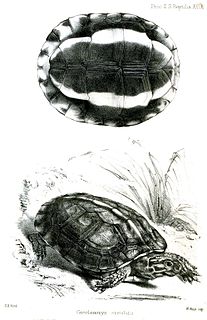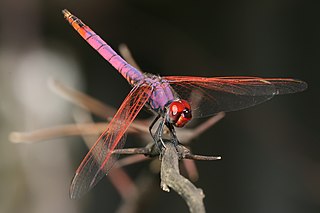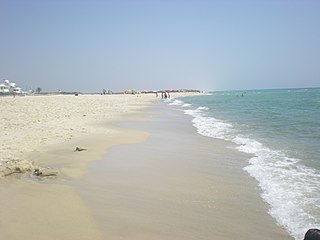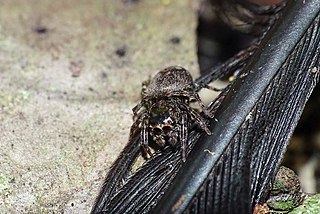
Theileria is a genus of parasites that belongs to the phylum Apicomplexa, and is closely related to Plasmodium. Two Theileria species, T. annulata and T. parva, are important cattle parasites. T. annulata causes tropical theileriosis and T. parva causes East Coast fever. Theileria species are transmitted by ticks. The genomes of T. orientalis Shintoku, Theileria equi WA, Theileria annulata Ankara and Theileria parva Muguga have been sequenced and published.

The brown wood turtle or brown land turtle is a species of turtle in the family Geoemydidae. The species is endemic to Central America and northern South America.

Trithemis annulata, known commonly as the violet dropwing, violet-marked darter, purple-blushed darter or plum-coloured dropwing, is a species of dragonfly in the family Libellulidae. It is found in most of Africa, in the Middle East, in the Arabian Peninsula and southern Europe. These insects are called dropwings because of their habit of immediately lowering their wings after landing on a perch. Males of this species are violet-red with red veins in the wings while females are yellow and brown. Both sexes have red eyes.

Naja annulata, commonly known as the banded water cobra or the ringed water cobra, is a species of water cobra native to western and central Africa. The species is one of the two species of water cobra in the world, the other one being the Congo water cobra.

Korba, ancient Curubis, is a town in Tunisia on the eastern shore of the Cap Bon. It was the place of exile of the Carthaginian bishop Cyprian in the year leading up to his martyrdom. Modern Korba is in the Nabeul Governorate and had a population of 48,314 in 2014.

Nyctemera annulata, the magpie moth, is a moth of the family Erebidae. The species was first described by Jean Baptiste Boisduval in 1832. It is endemic to New Zealand and found in all parts of the country.

The spider species Nephila senegalensis is commonly known as the banded-legged golden orb-web spider. The name comes from the fact that the joints of the spider are typically coloured a golden yellow. It is common throughout much of sub-Saharan Africa, from Senegal and Yemen to South Africa. Males are much smaller than females. These spiders are diurnal and weave impressive webs.

Bartholomea annulata is a species of sea anemone in the family Aiptasiidae, commonly known as the ringed anemone or corkscrew anemone. It is one of the most common anemones found on reefs in the Caribbean Sea.

Copa is a genus of corinnid sac spiders first described by Eugène Simon in 1886.
Tegenaria annulata is a species of funnel-web spiders found in Bosnia-Herzegovina, Croatia, Montenegro and Serbia.
Afroneta is a genus of dwarf spiders that was first described by Å. Holm in 1968.
Afroneta annulata is a species of sheet weaver found in the Congo. It was described by Merrett in 2004.
Copa annulata is a species of spider in the family Corinnidae. It is endemic to Sri Lanka.
Alistra is a genus of dwarf sheet spiders that was first described by Tamerlan Thorell in 1894.
Curubis erratica is a species of spider of the genus Curubis. It is endemic to Sri Lanka.
Curubis tetrica, is a species of spider of the genus Curubis. It is found in Sri Lanka and India.
Cyphonisia is a genus of African brushed trapdoor spiders first described by Eugène Simon in 1889.

Ischnothele is a genus of spiders in the family Ischnothelidae. It was first described by Anton Ausserer in 1875.

Curubis is a genus of Asian jumping spiders native to India and Sri Lanka which was first described by Eugène Louis Simon in 1902. As of 2019 it contains four species.










